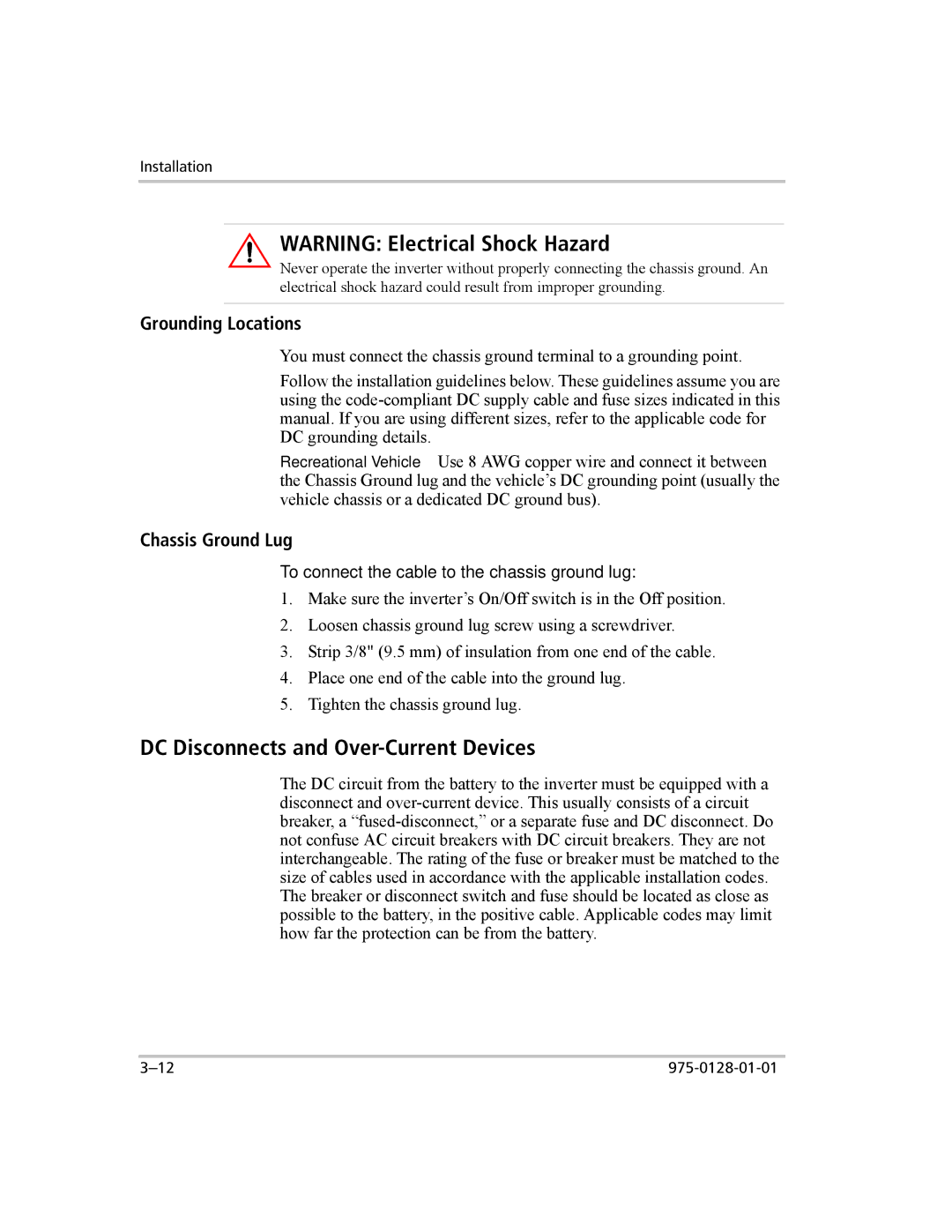
Installation
WARNING: Electrical Shock Hazard
Never operate the inverter without properly connecting the chassis ground. An electrical shock hazard could result from improper grounding.
Grounding Locations
You must connect the chassis ground terminal to a grounding point.
Follow the installation guidelines below. These guidelines assume you are using the
Recreational Vehicle Use 8 AWG copper wire and connect it between the Chassis Ground lug and the vehicle’s DC grounding point (usually the vehicle chassis or a dedicated DC ground bus).
Chassis Ground Lug
To connect the cable to the chassis ground lug:
1.Make sure the inverter’s On/Off switch is in the Off position.
2.Loosen chassis ground lug screw using a screwdriver.
3.Strip 3/8" (9.5 mm) of insulation from one end of the cable.
4.Place one end of the cable into the ground lug.
5.Tighten the chassis ground lug.
DC Disconnects and Over-Current Devices
The DC circuit from the battery to the inverter must be equipped with a disconnect and
